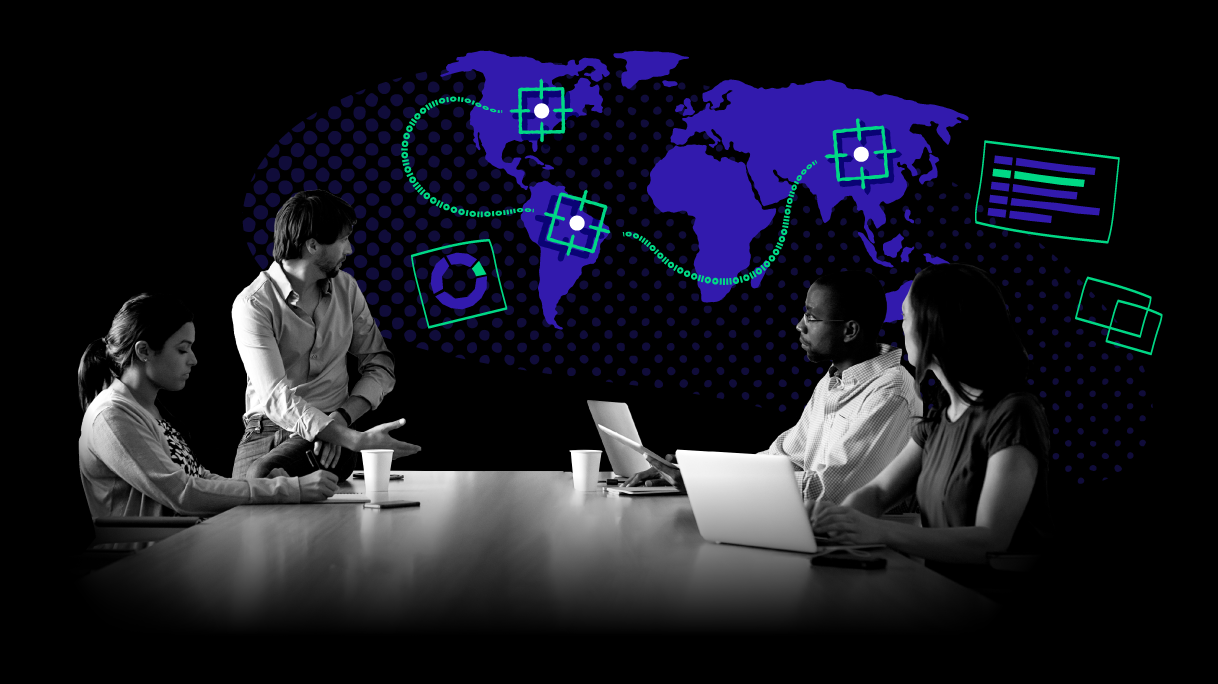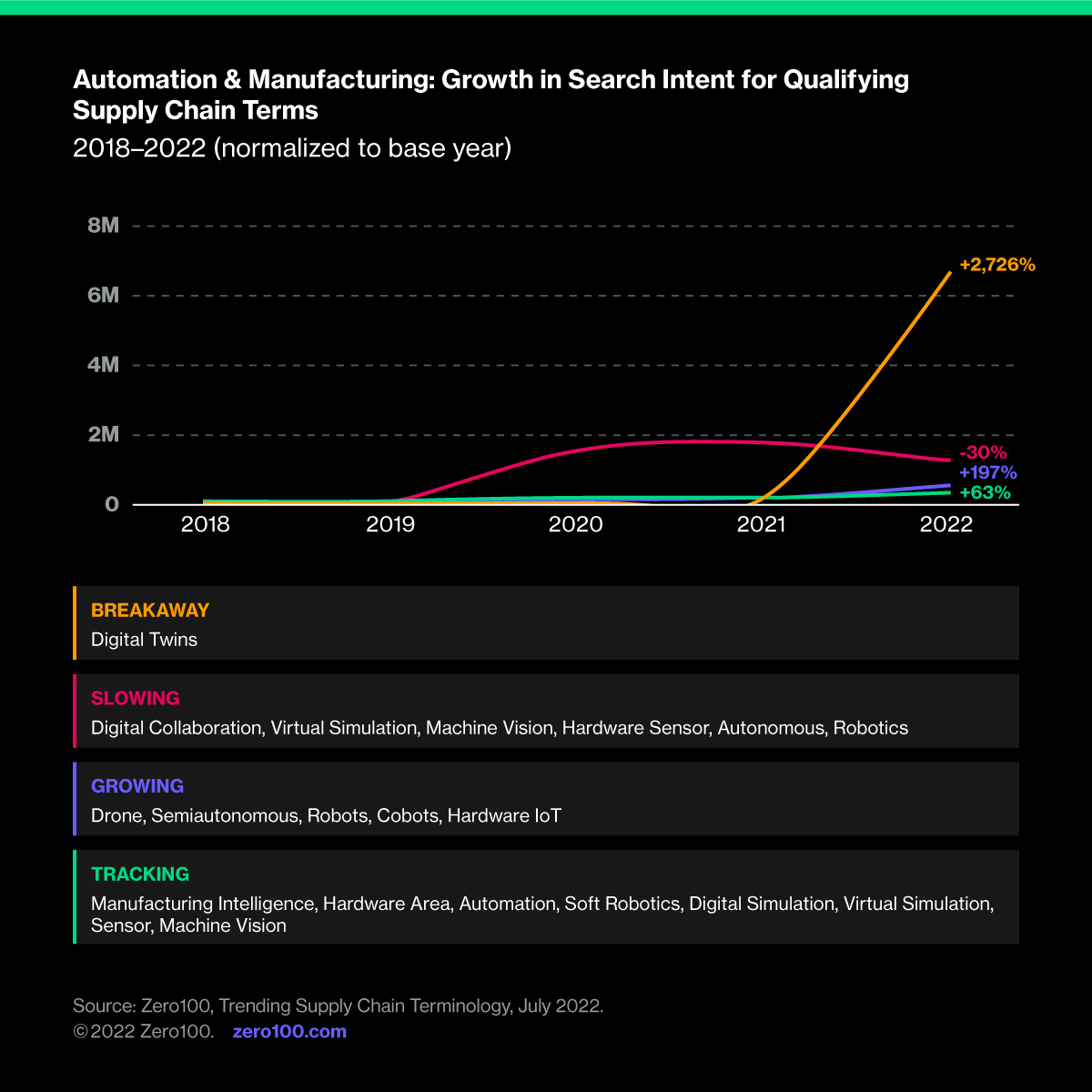
Digital Twins Break Into the Boardroom
Digital twins are a powerful tech tool for engaging top business leaders in strategic supply chain bets with real options. The promise of visualizing and gaming out acquisitions, new channel strategies, and disaster scenarios has moved from science fiction to board room reality.
Board conversations around inventory and supply chain competence are heating up, and it’s not just for thrill seekers like Tesla’s Elon Musk.
A March 2023 CNBC survey of 90 supply chain managers representing the American Apparel and Footwear Association, ITS Logistics, WarehouseQuote, and the Council of Supply Chain Management Professionals (CSCMP) found just over one-third (36%) said they expect inventories to return to normal in the second half of this year, with an equal percentage expecting a glut to last into 2024. Uncertainty abounds.
Digital technology can help. At our recent Zero100 Forum, we shared Fall 2022 research findings indicating AI and Machine Learning (ML) can improve forecast accuracy and reduce inventories by as much as 50%.
But we also learned from the high-profile failures of ML-powered public health models to predict the spread of Covid-19 that even the most advanced learning machines are useless if trained by bad data.
Human judgment and advanced planning technology are equally essential to coping with all this volatility. Board directors expect supply chain leaders to master both and be able to explain it all in business terms. The question is, how?
Meet Your Twin
Our recent study on Regenerative Business Planning (RBP) found that so-called “digital twins” are a key emerging component.
Back in the late 1960s, engineers working on the Apollo 13 space mission at NASA realized they needed a way to simulate reality in the spaceship in order to diagnose and then repair any problems while astronauts were 200,000 miles away. So, they created a “twin,” an exact replica of the spaceship on the ground in Houston (The twin saved pilots lives when oxygen tanks blew up on board).
Fast forward to 2002 at University of Michigan, where industrial engineers birthed the concept of “digital twins,” virtual simulations that engineers could use to pressure-test aircraft, refineries and other complex systems without ever leaving the safety of the engineer’s cubicle.
Supply chain leaders are now fast realizing that we can take advantage of still increasing data processing power to apply digital twins to risky global supply-demand scenarios and fundamentally change the risk-reward balance.

One of the earliest high-profile examples of supply chain digital twins in action was at Microsoft’s consumer hard goods division, led by Chief Supply Chain Officer Donna Warton:
- Starting with the 2019 U.S. - China tariff skirmish, Warton saw the volatility writing on the wall and built a prototype risk model to allow gaming out the options. “We WERE the control tower,” said Warton.
- Microsoft then invested steadily in a digital twin simulator that carried the company out of the China trade war, through the pandemic, and into the post-pandemic rebound.
- As of 2022, the digital twin model digests multi-dimensional, multi-echelon data sets across 40,000 SKUs, simulating supply-demand options and implications as frequently as daily.
“Our agility is now off the charts,” summarizes Warton.
Beyond agility, the other advantage of these simulators is that they allow humans to peer inside the black box. Too often, planners don’t trust advanced planning models because they can’t understand them. The proverbial 2 x 2 matrix that places unknowable risk in the lower left quadrant becomes an excuse to return to spreadsheets and gut feel.
By modeling and visualizing systemic interactions of investment choices, digital twins let senior executives and their teams see financial, operational, and even environmental impacts of decision options before any commitment is made.
Optionality (Not Data) Is the New Oil
When we combine digital twins with the power of AI, ML, cloud-based data architectures, IoT infrastructure, and the Moore’s Law drumbeat of exponential improvements in processing power, supply chain leaders and machines together may finally have an adaptive RBP capability that can handle and even take advantage of the randomization challenges of our era.
Data are vital to the risk management equation, but data are nothing without insights and clear choices.
Inventory, cash, and cost are today’s drivers of board-level heat. The digital twin is emerging as a powerful tech tool for engaging business leaders in the full portfolio of risks and bets. Imagine your next board meeting - Gaming out acquisitions, new channel strategies, and disaster scenarios as you project value-weighted real options and EPS guidance implications on the conference room wall.
We have seen this future, and you are building it.